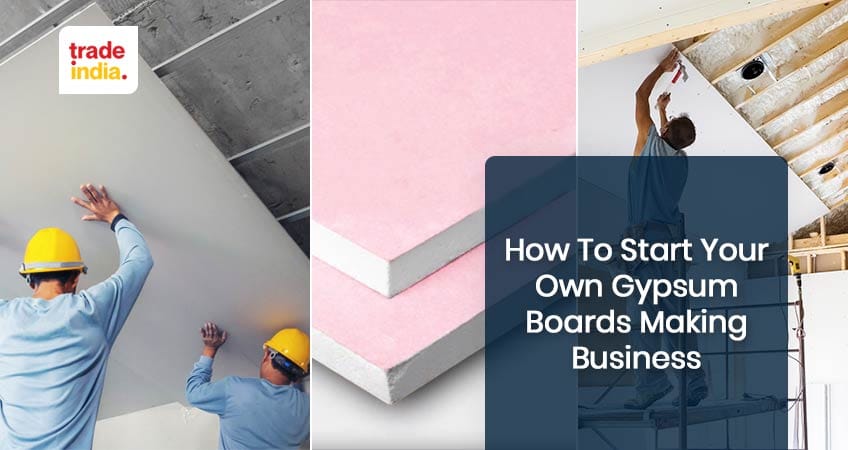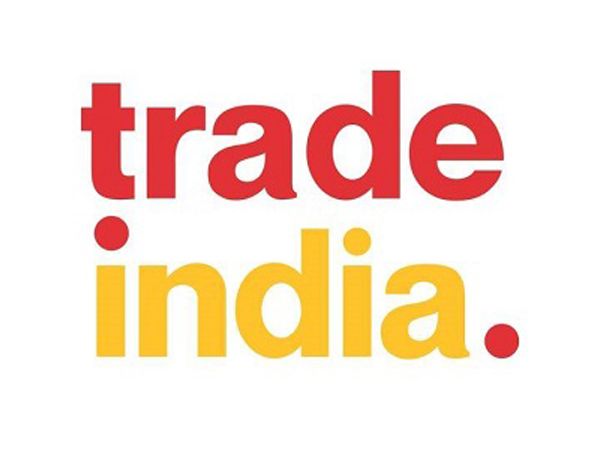How To Start Gypsum Boards Making Business in India

Introduction
The term "gypsum board" refers to a family of goods. These have a gypsum base and are covered with papers on the front, rear, and long sides. "Gypsum panels items" refers to the many types of materials used in constructing buildings. Paper and fiberglass mats are two common surface coverings for gypsum wood panels, but the core is always made of gypsum. Fire retardant drywall is easy to install, and it also provides a level of fire protection for structures. Ten square feet (1.0 sq m) of the board containing gypsum holds more than 2 quarts (2 1) of water in crystalline form.
Water in the Gypsum Boards
Water in the gypsum boards evaporates in the presence of fire, keeping the panel's heat-stable at 212°F (100°C) once all of the water has evaporated. The gypsum itself would not burn even after all the water has evaporated, therefore it continues to provide significant fire suppression systems even after that. Setting belts transport wet gypsum board, which is now being created following board shape, natural coagulation, and automated cutting. It is currently wet. After passing via the 1# horizontal conveyor, the plate rotation machine, and the transmission footbridge, the wet boards swiftly enter the dryer.
Gypsum Board Characteristics
1. Gypsum's Non-Combustible Qualities
There are water crystals within the gypsum material that are heated up when the gypsum boards manufacturers work on the heat-up process. The process of heating gypsum to dehydrate it is known as calculations.
Calcination is the term for the process of dehydrating gypsum goods by heating them to a point where water crystals form within the substance.
Low safe temperatures may be kept because the casing is made from materials that are combustion-tolerant.
Once water crystals have frozen, the residue acts as an insulator until it separates.
2. Gypsum's Thermal Properties
In terms of humidity and temperature, the thermal qualities of the gypsum structure would be ideal.
The plasterboard used within the structure keeps everything dry as a vapor barrier.
Additional insulating characteristics may be found in gypsum building materials like plasterboard and formwork.
3. Gypsum's Fire Resistance
It has a natural resistance to fire. They prevent the spread of a fire, ensuring the protection of life.
The gypsum products' fire resistance is a result of the water content.
Three liters of crystal water are contained in 15-mm-thick plasterboard.
A layer of protection is formed as water evaporates as the flames get closer to it.
This will assist to keep the fire and the surplus material from spreading.
Gypsum Board Divisions
1. Water-Resistant Gypsum Board
It has a water-resistant gypsum board ceiling base and a water-repellent surface paper for protection against the elements. Wall tile can be installed on top of it in damp spaces like showers and toilets.
2. Drywall White Board
Drywall often has a white face with a brown back. With thicknesses ranging from 3/8-inch to 1-inch, this is one of the most cost-effective drywall options. There are four-by-eight-foot panels of this sort on the market, which are the most common.
3. Fire-Resisting Gypsum Board
In structures, fire-resisting base material acts as a protective barrier due to the particular properties of the gypsum base. During a fire, the organically mixed water in the budget-friendly fire-resistant gypsum board price protects building materials that are vulnerable to flames.
4. Moisture-Resistant Gypsum Plasterboard
Moisture has less of an effect on it because of the additional layer. However, if you want to use it in areas where it will be in regular contact with water, you should be aware that it is not waterproof. These will erode if they are exposed to water regularly.
5. Plaster or Blue Board Gypsum Board
Blue gypsum or plaster baseboards are made with an absorption-enhancing surface layer. It is used mainly for plywood plastering and has a restricted range of applications.
Mold and water resistance make the improved form perfect for partition boards.
Read More: Top 15 Latest False Ceilings Designs In India
Gypsum Board Production Methods
There are many stages in the production process
Method 1:
Once the gypsum has dried, it is pulverized using a Disc Pulverizer. At 140°C to 170°C for about 2 hours, place the object in a Rotary Drum Calciner.
Method 2:
Re-pulverize the plaster of Paris to a mesh size of 150°C when it has cooled. After that, combine the powdered cement with the colorant. Afterward, add water to create a slurry.
Method 3:
Make molds out of reinforced materials and fill them with the slurry poured in. It is then returned into the slurry after being smoothed up using wooden reapers or flat planks of wood.
Method 4:
Drying in the shade for three to four days after being taken from molds is the standard procedure for well-set boards. Curved Corrugated sheets and cartons are used to package dried gypsum boards for sale.
CaSO. 42H2O (calcium sulfate dihydrate) is the chemical formula for gypsum, a white powdery mineral that occurs naturally. Plaster, blackboard/sidewalk chalk, drywall, and other building materials all use it as a fertilizer and a primary ingredient.
Registration and Licensing of Gypsum Board Manufacturing
You will have to register for a variety of government registrations and permits to get your business up and running. authorities.
The following are the essentials. It's always a good idea to double-check the regulations in your state before diving in headfirst.
- Register your company with the ROC based on the capital structure you've chosen.
- Get a business license from the city.
- Register for MSME registration with Udyog Aadhaar.
- Get the GST Registration Number.
- Request for a NOC from the Environmental Protection Agency (EPA).
- Consider earning your BIS credential. The Bureau of Indian Standard Specification Number IS: 2095-1964 specifies the standard quality.
- Trademark registration is a good way to safeguard your company's brand identity.
Prospects for the Indian Gypsum Board Market
The strengthening of the building industry and a more dynamic pricing approach by producers are two of the most important factors.
For interior ceilings and walls, gypsum-based boards are the most typical construction blocks.
Plywood, chipboard, and natural wood panels may all be replaced with this low-cost alternative without depleting natural resources. For business enterprises, gypsum boards are a popular choice for interior design.
The market for gypsum board ceiling design Panels has risen as a consequence of the greater focus on building and the growing flow of financing toward low-cost housing.
Gypsum board is a wonderful investment option for entrepreneurs because of its strong market potential.
Gypsum product kinds, setting times, and mixing times are the next most important pieces of information. POP's uses in medicine and fireproofing are also discussed, as is how gypsum board is made, as are drywall, acoustical ceiling applications, drywall additive mixing techniques, and variations in sheathing and backer board construction.
To put it another way, Maharashtra is the main market among the Top 10 States in the India Gypsum Board Market as of 2021, and this superiority is forecast to keep in future years as well, thanks to a rise in residential construction, particularly in Mumbai, which is the state's capital.
Gypsum Board Manufacturing Equipment and Raw Material Sources
The machinery and business process modeling may be set up in a place as little as 186 square meters.
Electricity and water are two of the most important resources that any home or business must-have. The following equipment is needed:
- Disc Pulverizer with a 7 H.P. Electric Motor
- 2 meters in length, 2.5 meters in diameter, cylindrical rotary drum calciner with a roasting oven powered by coal
- The weight capability of the platform is 100 kg.
- Tables with a Marble Topped in Wood
- Slurry tank for the production of molded tools, etc.
- putting equipment to the test
The unit's primary raw materials are gypsum and plaster of paris. In addition, you'll need to stock up on packing supplies.
Dryness is due to the crystalline structure of water in gypsum. Although crystalline water such as ice melts at normal temperature, the water encapsulated in gypsum atoms stays solid until warmed to 212°F (100°C), during which point it turns gaseous and evaporates.
While polishing automotive window glass, the glass is held in place by a layer of gypsum. As a natural fertilizer and fertilizer, gypsum is commonly applied in agriculture.
Plaster of Paris is crushed gypsum that has been baked and dried to eliminate 75% of its water content.
Conclusion
To address the question, 'how to establish a drywall production plant?', we've covered the basics. As a result, a production line costing between $150,00 and $200,00 is required.
Depending on the size, location, and total value of the building, you'll be charged a fee. The cost of redecorating 120 yd2 will rise by $5.000.
FAQs: Gypsum Boards
Q: What are the best gypsum board brands in India?
Ans: These are the best brands in India:
- Activ Air.
- MR Board.
- FRMR.
- Fireline.
- Gypboard® Plain.
- Duraline
- SoundBloc
- Glasroc H
Q: How to calculate the amount of gypsum board?
Ans: Divide the total size by 32 (when you're using 4-by-8 sheets) or 48 (if you're utilizing 4-by-12 sheets) to get the number of drywall sheets you'll need. When calculating the overall cost, divide the overall number of layers by the value per sheet to get the maximum count of sheets.
Q: What is the cost of drywalling 1000 square feet?
Ans: Between $1,600 and $3,500, the average cost to install drywall is between 1,000 square feet of standard 12" drywall, installed and completed in a makeover.
Explore More:
